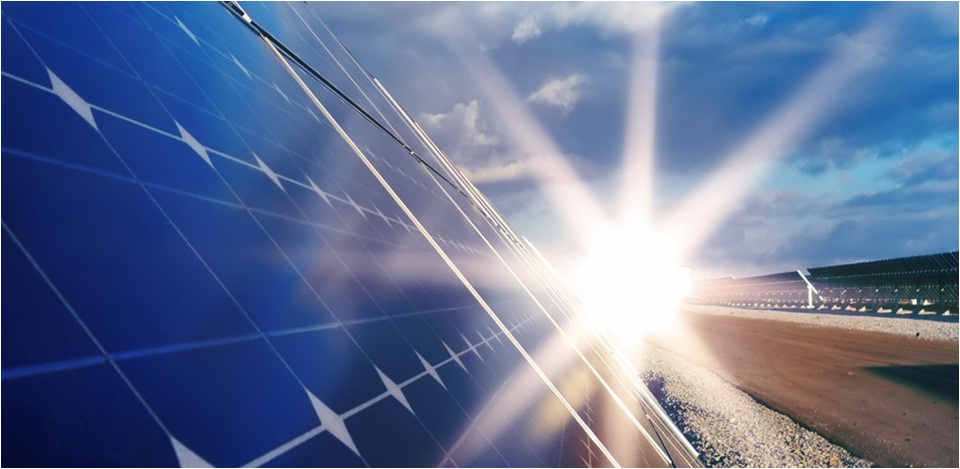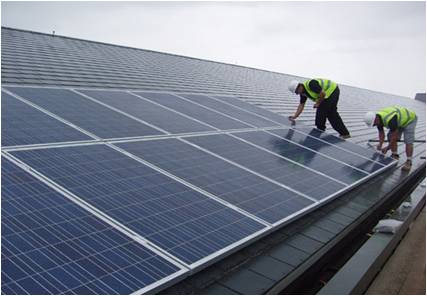Solar Power Plant
A photo voltaic system (informally, PV system) is an arrangement of components designed to supply usable electric power for a variety of purposes, using the Sun (or, less commonly, other light sources).
PV systems may be built in various configurations:
- Off-grid without battery (array-direct)
- Off-grid with battery storage for DC-only appliances
- Off-grid with battery storage for AC
- Grid-tie without battery
- Grid-tie with battery storage
A photo voltaic array (also called a solar array) consists of multiple photo voltaic modules, casually referred to as solar panels, to convert solar radiation (sunlight) into usable direct current (DC) electricity. A photo voltaic system for residential, commercial, or industrial energy supply normally contains an array of photo voltaic (PV) modules, one or more DC to alternating current (AC) power converters (also known as inverts), a racking system that supports the solar modules, electrical wiring and interconnections, and mounting for other components. Optionally, a photo voltaic system depending upon the application may include some or any of the following: renewable energy credit revenue-grade meter, maximum power point tracker (MPPT),battery system and charger, GPS solar tracker, energy management software, solar concentrates, solar irradiance sensors, anemometer, or task-specific accessories designed to meet specialized requirements for a system owner. The number of modules in the system determines the total DC watts capable of being generated by the solar array; however, the inverter ultimately governs the amount of AC watts that can be distributed for consumption. For example: A PV system comprising 11 kilowatts DC (kWDC) worth of PV modules, paired with one 10-kilowatt AC (kWAC) inverter, will be limited by the maximum output of the inverter: 10 kW AC.
A small PV system is capable of providing enough AC electricity to power a single home, or even an isolated device in the form of AC or DC electric. For example, military and civilian Earth observation satellites, street lights, construction and traffic signs, electric cars, solar-powered tents,[1] and electric aircraft may contain integrated photo voltaic systems to provide a primary or auxiliary power source in the form of AC or DC power, depending on the design and power demands.
Large grid-connected photo voltaic power systems are capable of providing an energy supply for multiple consumers. The electricity generated can be stored, used directly (island/standalone plant), fed into a large electricity grid powered by central generation plants (grid-connected or grid-tied plant), or combined with one, or many, domestic electricity generators to feed into a small electrical grid (hybrid plant). PV systems are generally designed in order to ensure the highest energy yield for a given investment.


